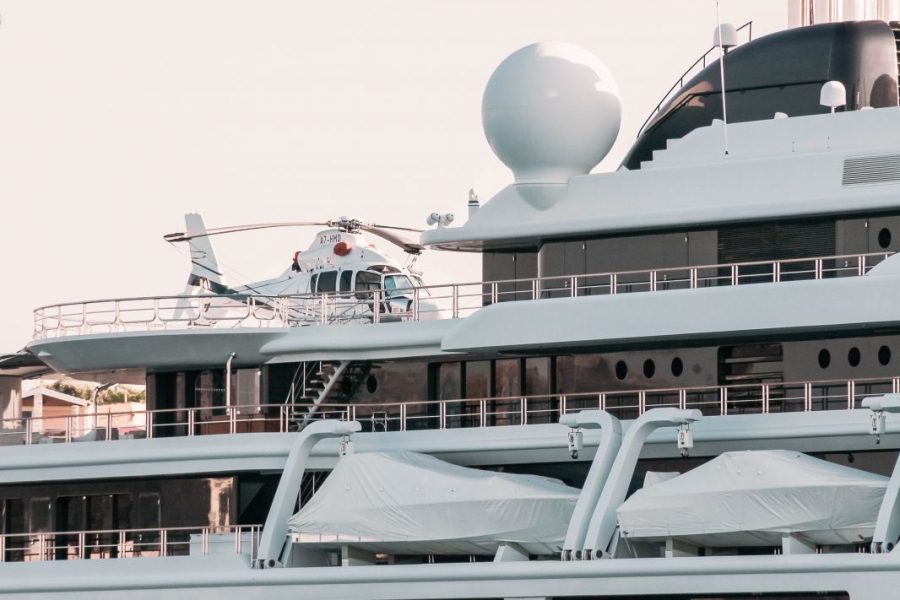The A-Z of yachting jargon
By Georgia Tindale
Looking to blend in seamlessly at yacht shows? Want to hide your greenness when you’re walking the docks or trying to make an impression at industry networking events? Here at Yotspot, we have the ideal solution: a guide to yachting jargon to make sure you can talk the talk with the best of them, as well as giving you the edge in those all-important job interviews. If you can get your head around these key terms, you’ll be safely aboard in no time!
Anchor: A method of ‘parking’ a yacht, often for a lunch break in a quiet bay. Or a chain or line, with a weighted hook at the end that attaches to the bottom of the seafloor and stops the yacht from floating away.
Aft – Also known as the ‘afterdeck’. This is the rear of the boat, which is also called the stern.
Beam: The width of the vessel at its widest point.
Berth: A bed or sleeping compartment on a vessel. Also used to refer to where vessels are moored in marinas and harbours, as well as the distance between vessels as they pass each other, or pass a fixed object.
Bow: The front of a yacht.
Buoy: A marker out at sea used to warn vessels of danger. They come in many different sizes and carry different meanings.
Bulkheads: The dividing walls between the cabins and the areas belowdecks.
Cabins: The bedrooms on board a yacht. Often called ‘staterooms’ in yacht marketing.
Deck: The part of the yacht you walk on. The ‘deckhead’ is the underside of the deck above.
Displacement: The weight of water that a craft pushes aside when floating, made up of the weight of the vessel and its contents.
Draft/draught: Not a type of beer. The minimum depth of water needed to float your boat.
Ease: To let the sails out.
Fender: The rubber object dangling off the side of the yacht which helps to prevent damage to the vessel.
Flybridge: An open bridge deck from which the yacht can be fully controlled while still providing all-around, open-air visibility.
Galley: The kitchen on board a yacht.
Head: The toilet on board a yacht.
Helm: The steering apparatus on board a yacht, often the wheel or tiller.
Hull: The main body, including the bottom and sides of a yacht.
Itinerary: The intended route of travel for your yacht. Typically planned in advance, the itinerary needs to remain flexible in response to weather conditions and the preferences of the owner/guests.
Knot: The unit of speed for yachts (equal to one nautical mile an hour).
LOA: Length overall – the maximum length of a yacht’s hull, which includes the overhanging ends that extend beyond the main bow and main stern.
Marina: a harbour with moorings for small boats and pleasure yachts.
Mess: Where the crew socialises and eats. This can be found on the mess deck.
Mooring: Another mode of ‘parking’ your boat. At its most basic level, mooring your boat means you are securing it to a permanent anchor location in the water.
Nautical Mile: A measure of distance on the water, equal to 1,852 km, 2025 yards, or 1,1508 miles.
Poop deck: The aft-most, highest deck on board a yacht. it often forms the roof of a cabin in the stern on a sailing boat.
Port: The left-hand side of the boat when facing the front. You can remember the difference between ‘port’ and ‘starboard’ by repeating the handy line: ‘You left the port on the shelf…’
Quay: The edge of a harbour.
Range: How far a yacht can travel. Or, to put it more technically, ‘the maximum distance from a base that the fuel capacity of a ship will allow it to travel and then return safely at cruising speed.
Saloon: The living area on board a yacht.
Sea trial: The testing phase of a new yacht. This takes place on open water and can last between a few hours and several days. During sea trials, all of the onboard systems are evaluated, tested and calibrated.
Skipper: The captain of a yacht.
Starboard: The right-hand side of the yacht when facing the front.
Stern: The rear of the yacht.
Tender: A small craft that is used for serving and supporting a larger vessel.
Underway: When a yacht is moving through the water.
VHF: (Very High Frequency): Radio frequencies between 30 and 300 megahertz. This is generally used to indicate on-board radios which are operating in that band.
Watch: A period of time during which a part of the crew is on duty.
Waterline: The line where the ship meets the sea.
Wheelhouse: The location on a ship where the steering wheel is located, which serves as a shelter for the person at the wheel.
Got those words under your belt and feeling ready for your job interview? To find out more about the exciting range of roles offered within the yachting industry, visit our Yotspot jobs listings here.


